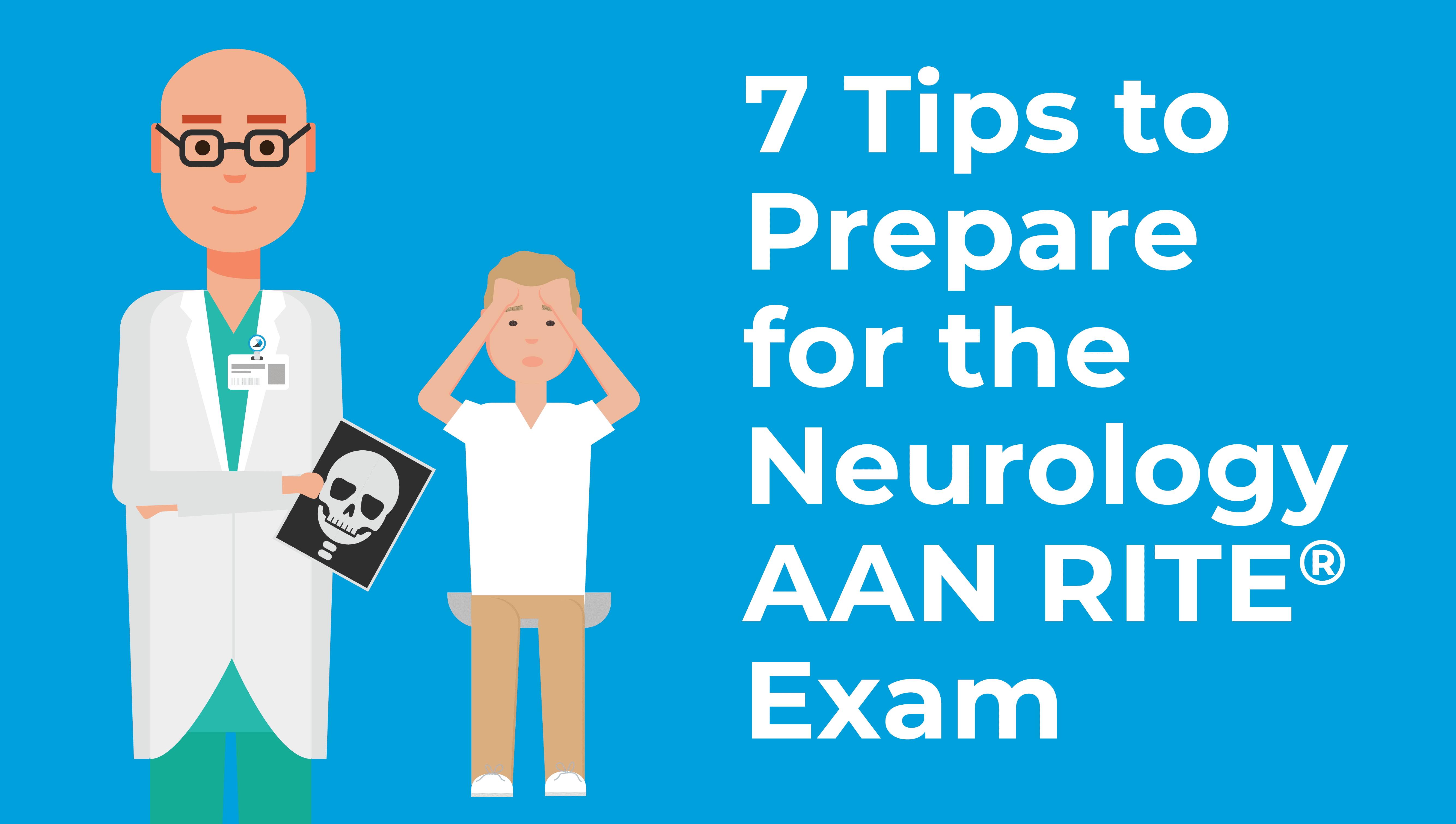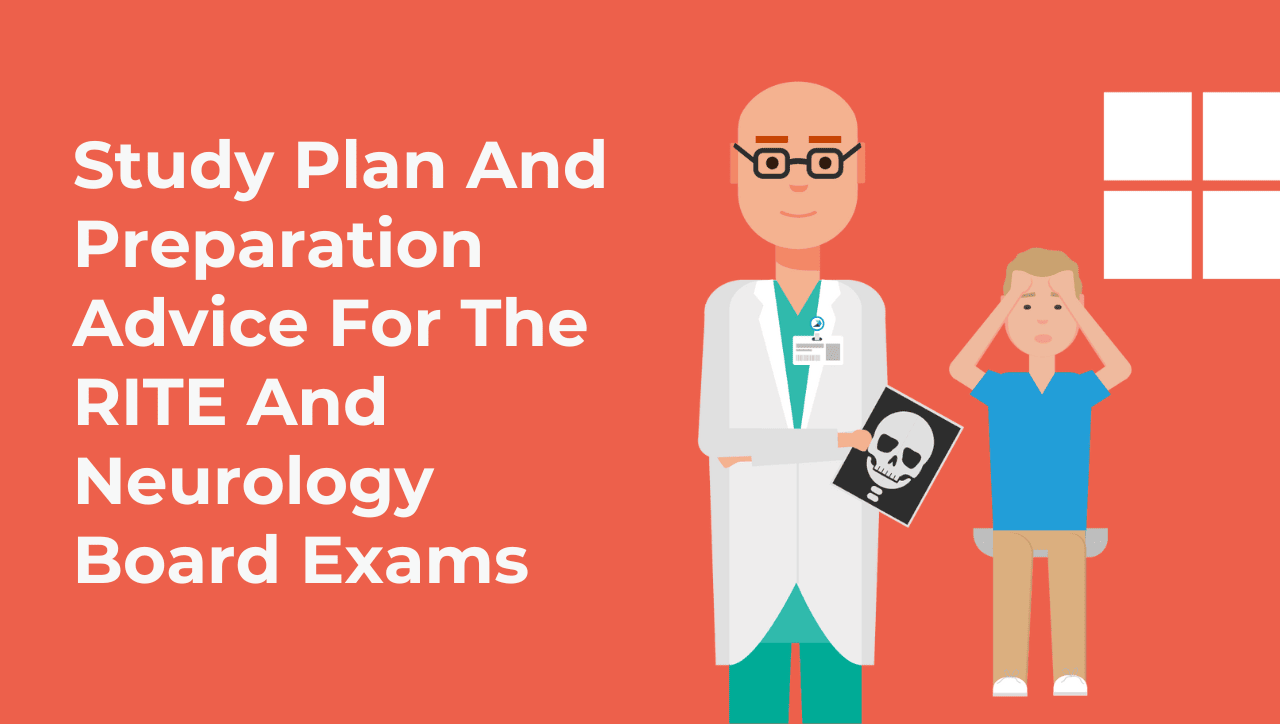AAN RITE: Everything You Need To Know
The American Academy of Neurology (AAN) Resident In-Service Training Examination (RITE) exam is an annual, comprehensive examination covering topics within the specialty of neurology. The purpose of the examination is to identify knowledge areas of strength and weakness, and to gauge preparedness for the Neurology Board Examination taken at the conclusion of residency training.
The RITE exam is taken by neurology residents in their PGY-2 through PGY-4 years, usually around February. Scores are released six to eight weeks following the examination, usually in April. Upon release of results, you will receive a personalized spreadsheet with percentage correct in each tested category, as well as a packet with question explanations. There is no minimum score required on the RITE examination necessary to complete residency training; it is merely a tool that resident physicians and their program directors can use to guide learning throughout training. The higher your score, the more likely you are to pass the Board Examination required to become an attending physician on your first attempt.
AAN RITE Exam Content and Structure
Content that is tested on the examination includes questions from behavioral and neurocognitive disorders, epilepsy and episodic disorders, genetic and developmental disorders, vascular neurology, neuromuscular diseases, demyelinating diseases, movement disorders, spinal diseases, neuroinfectious disease, metabolic diseases, CNS disorders, sleep disorders, and pain disorders. Examinees should always familiarize themselves with the latest RITE blueprint as part of their exam preparation.
The eight-hour examination is currently computerized and consists of 400 questions, which are broken down into several smaller sections that you complete throughout the day. There is typically a one-week time span within which all neurology residents complete the examination; the exact procedure may vary slightly from program to program.
Question Format
The question format aligns with the same question types that can be found on the ABPN Neurology Certification exam, which is multiple choice and linked-item set questions. You will encounter traditional stand-alone, single-best answer items. And you will answer several multiple-choice questions that are tied to (or linked to) a common case that is representative of experiences residents will see in practice. These cases will be presented in text or video and audio format, which will require the use of headphones.
How Long You Should Study
Throughout your residency training, you will be studying daily while working on the wards and in the neurology clinics. This “active learning” will teach you a surprising amount! In addition, most residents will begin dedicated study several weeks to several months before the RITE examination.
There are several popular resources including practice RITE question banks like TrueLearn, question books, and review texts that you should incorporate into your study schedule at least three months before exam day. The American Academy of Neurology also has wonderful resources for members including journals, podcasts, practice questions, and videos.
Top Three Tips for Taking the RITE Exam
- Don’t Stress. This examination is a tool provided by the American Academy of Neurology to help you identify your individual strengths and weaknesses; it is not meant to be a stressful exercise. Use it as a learning opportunity and tool. Don’t feel pressured to compare your results to those of your colleagues – everyone progresses through residency at their own pace.
- Stick with What Works for You. At this stage of advanced education, most learners have a preferred strategy – use what has historically worked for you to prepare for this exam. If you learn best by doing questions, use a question book or bank. If you prefer to read text, purchase a review textbook. There is no incorrect way to prepare, as long as you pick a comprehensive resource and stick with it.
- Don’t Cram. Each day as a resident physician is exhausting, and at the end of the day it is difficult to find motivation to hit the books. In an effort to decrease stress and cramming, choose a study resource and spend 10-30 minutes per day reviewing the resource. That way, you slowly gain knowledge over time, and decrease burnout. If you can study for 10 minutes per day, you will be well ahead of your peers.
Originally Written By: Lauren Peruski, DO, Sparrow and MSU Neurology Resident
Updated and Maintained By: TrueLearn
For additional information on the AAN RITE, visit aan.com.


![How I Studied for the Neurology RITE<em>®</em> Exam [Study Tips Series]](https://staging.truelearn.com/wp-content/uploads/2020/11/Featured-Image-04-scaled.jpg)